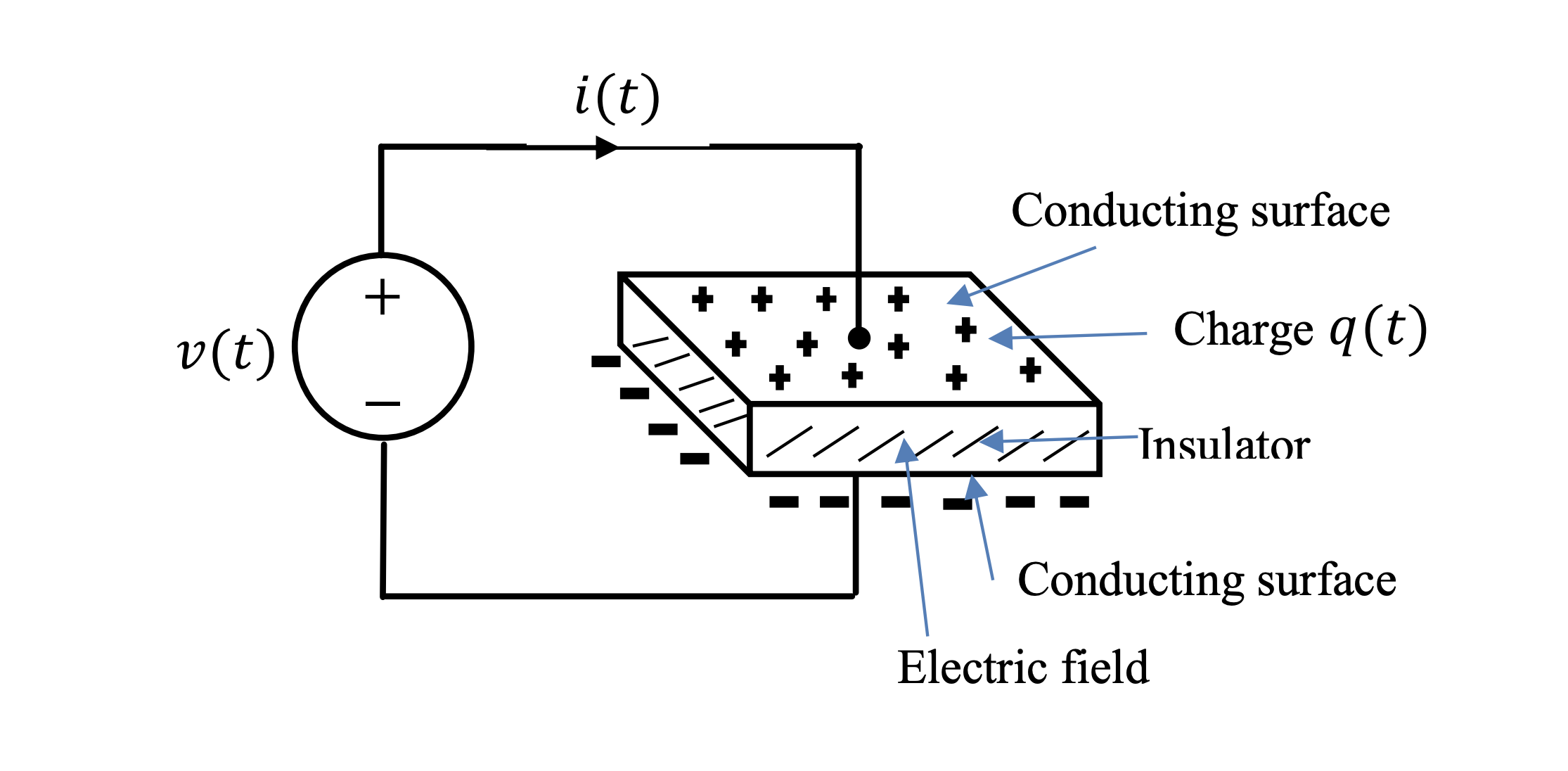Capacitor
A capacitor consists of two conducting surfaces separated by an insulator. It stores energy by building up charge.
Good refresher video by Engineering Mindset: https://www.youtube.com/watch?v=X4EUwTwZ110
 Capacitance is given in Farads, where
Capacitance is given in Farads, where
Interpretation of capacitance: The electric charge that must be added to the conducting body to increase its electric potential by .
Energy Stored in a Capacitor
The usefulness of a capacitor stems from the fact that it can be charged slowly but then can release energy very quickly. A defibrillator is an example of an application where capacitors are used to discharge current through a patient’s chest.
ECE140
An idea linear capacitor has the following linear relation for charge:
Therefore, taking the derivative on both sides, we have
Some Remarks
- Notice that current is 0 if the voltage is constant over time
- A capacitor voltage must be a continuous function of time, else current will suddenly be infinity which is impossible, i.e. cannot jump.
Finding from
Power Energy (derived from power, since )
Capacitor and DC Voltage (Open Circuit)
If the voltage is constant (DC voltage), then the capacitor acts like an open circuit.
Combinations of Capacitors
Capacitors can be combined to form parallel capacitors and series capacitors.
For parallel capacitors, the formula is
For series capacitors, the formula is
ECE106 Stuff
Breaks things down at an even lower level.
The basic formula is Steps for Calculating Capacitance:
- pick coordinate system
- Assume / charge on each conductor
- Find with Gauss Law or other methods
- Find by going from to
- Find
always cancel out, the only parameters that remain are
- Geometric properties
- Permittivity
- Separation Distance
Capacitance
Make sure to understand WHY (ex: why ) so capacitance is
Other formulas, you see them in ECE140 but this is cleaner:
Energy